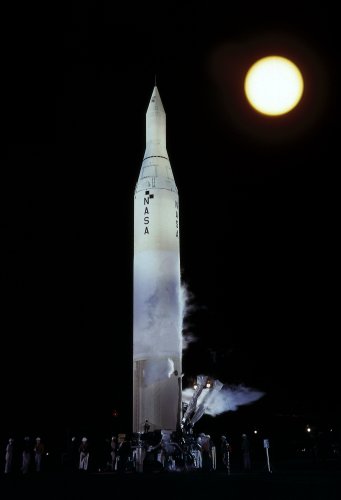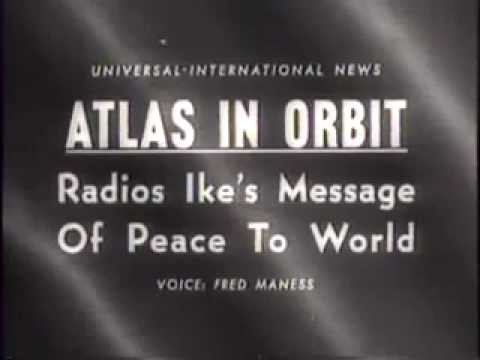This is what happens when you let scientists play with toys.
Apparently, last summer, the Air Force detonated three atomic bombs high above the South Atlantic… just to see what would happen!
That's actually a little too glib. Dr. N.C. Cristofilos, of the Lawrence Radiation Laboratory, has always wanted to trace the lines of magnetic force that girdle the Earth. After Sputnik launched in October 1957, he has been hung up on the idea of using satellites to measure the path of charged particles along those lines. But Dr. Cristofilos was not content to collect data of the natural environment for, as he confided to me, "The creation of artificial effects under controlled conditions is more interesting, as the initial conditions are known and therefore physical quantities can be measured under completely diferent conditions from those which the natural phenomena allow."
Which, translated into layman's speech, means, "We need to detonate three atomic bombs high above the South Atlantic and see what happens!"
The Air Force love their toys, too, and the whole project went from concept to completion in about half a year. They apparently wanted to get the experiment done lest some pesky nuclear test ban treaty come into being unexpectedly (they needn't have worried).
In fact, I think the Air Force moved a bit too quickly for a project designed for purely scientific research. I have heard rumors (without detailing the source for fear of leaking classified information) that the real project aim was to see if, by detonating nukes high in the atmosphere, they might create an artificial barrier against enemy missiles, or at least light them up in flight for easier interception.
I can't tell you if that's the case (I doubt it), but we do have a host of scientific data available. You see, Explorer IV was launched last summer specifically to observe the effects of Project Argus (as the tests were called). Of course, they didn't tell the press last July. I'm frankly amazed that we're being told the truth at all. Perhaps the whole thing was about to leak, and the government wanted to control the release.
So what did Explorer IV see? The Argus blasts created their own auroral light along the magnetic lines nearest the bursts. Electrons charged by the blasts flew along these lines to an apogee of some 4000 miles. Essentially, the satellite was able to see Earth's magnetic field glow in the dark. The Argus tests also enabled scientists to venture a guess as to the lifespan of a charged electron, though I haven't head anything definitive yet.
Of course, three tests in one section of the upper atmosphere hardly makes for a definitive data set. We clearly need more airbursts! I bet the Air Force is studying plans for several such tests over the Soviet Union, seeing how that nation covers such a large swath of territory that must be just loaded with magnetic lines of force. I bet we could even get the Russians to pay us for the service–if we did it at night time, we'd be providing lighting for those remote Siberians who lack access to electricity. Oh, we're such humanitarians! We should put Edvard Teller, that philanthropist, in charge of the project after he's done using atomic bombs to blast canals (Project Plowshare).
And if your coffee tastes funny, I hear strontium-90 is good for your bones. Why else would they absorb it preferentially over boring ol' calcium?
Oh dear. My cynicism is showing again, isn't it?
Back to fiction in two days. Satellite's got a snazzy new slick-sized format. But are the stories as impressive? Stay tuned!
(Confused? Click here for an explanation as to what's really going on)
This entry was originally posted at Dreamwidth, where it has comments. Please comment here or there.














